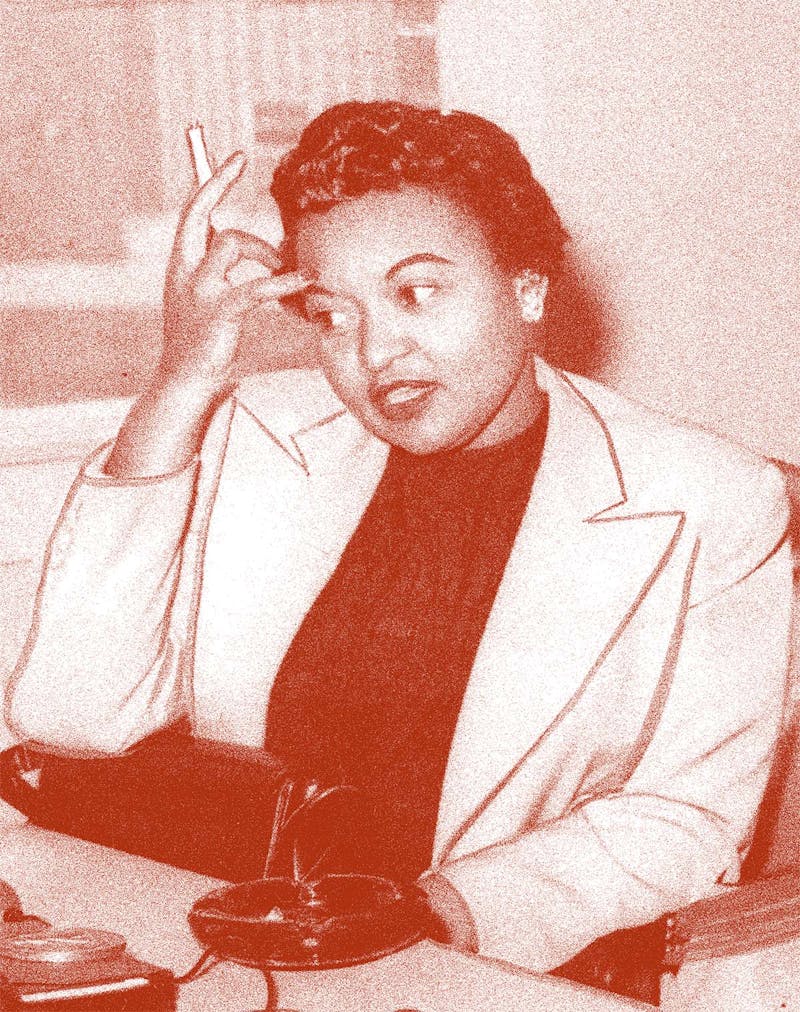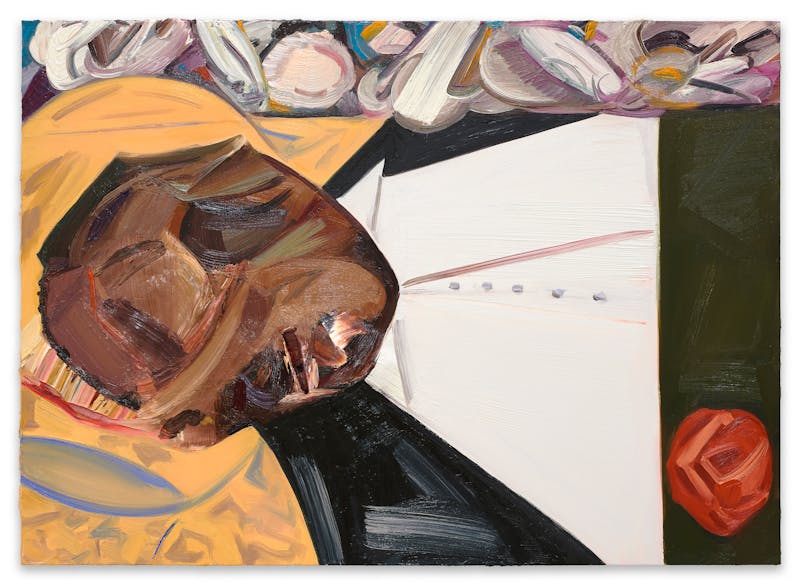Is Dana Schutz allowed to paint Emmett Till in his coffin? Dana Schutz is a successful artist: Her painting Open Casket is part of the 2017 Whitney Biennial, a show whose mission is to indicate the country’s cultural temperature. The painting depicts the dead body of Emmett Till, a 14-year-old boy from Chicago who was brutally murdered. The piece has become the focus of controversy in recent days; the artist and writer Hannah Black has called for its removal and destruction. She and many others have pointed out that black suffering is not a material that white artists can just make use of, like oil paint or videotape—an argument made in many debates over cultural appropriation. But the case of Emmett Till contains an extra layer of difficulty. His mother, Mamie Till Mobley, dealt with her loss by controlling the postmortem narrative and the image of her son in death. “I know that his life can’t be returned but I hope that his death will certainly start a movement in these United States,” she once said. It is a matter of both appropriation and of the history of American visual politics.

Emmett Till’s story begins in August 1955. While he was visiting family in Mississippi, Till and his cousins took a trip to a local grocery store, where 21-year-old Carolyn Bryant was working. Till bought a pack of gum and, apparently, interacted with Bryant in a way that offended her. A few days later, Carolyn’s husband Roy Bryant and his half-brother J.W. Milam kidnapped and murdered Till. When authorities found his body three days later, his face was so disfigured that his uncle, Mose Wright, could only identify him by an initialed ring. His body was sent back to Chicago where, after seeing the brutalized body of her son, Mamie Till Mobley decided to have an open-casket funeral.
Emmett Till’s mother displayed her son in public, even though his murderers had beaten his body beyond recognition. As Claudia Rankine wrote in her essay “The Condition of Black Life is One of Mourning,” “Mobley’s refusal to keep private grief private allowed a body that meant nothing to the criminal-justice system to stand as evidence.” She refused the etiquette that says grief should be a purely private hell. And she reversed the “tradition of the lynched figure left out in public view as a warning to the black community.” Her son’s body would not be made into a spectacle nor be a symbol for black fear and white supremacy. By controlling the way that his body looked, Mobley was able to define its legacy. Although he was taken from her, the way lynched Americans were taken from their families, she was able to invert the final stage of public murder, which is spectacle. Her action was both brave and a strikingly effective piece of visual rhetoric, accomplished in the depths of appalling grief. Rankine quotes Mobley: “Let the people see what I see.”
Both of the murderers confessed, citing Till’s alleged actions toward Carolyn as their motivation. On the stand, Carolyn Bryant testified that Till had grabbed her and made lewd remarks regarding previous sexual relations with white women. “I was just scared to death,” she said. She was a young white woman and Till was a young black man, so their narratives did not hold equal weight, even though her version of events was backed up only by vague recollections and his by a disintegrated body. Six decades later, her story turned out to be false. In Timothy B. Tyson’s book The Blood of Emmett Till, Bryant admits in an interview that she made up the most damning part of her testimony. Till had never grabbed her, nor did he use obscene language. “You tell these stories for so long that they seem true,” she said. “Nothing that boy did could ever justify what happened to him.” An all-white and all-male jury found her husband and Milam not guilty.
Emmett Till died because a white woman lied about their brief interaction. He died because his side of the story did not mean anything to the two white men who killed him, just as it meant nothing to the jury that acquitted them. For a white woman to paint Emmett Till’s mutilated face communicates not only a tone-deafness toward the history of his murder, but an ignorance of the history of white women’s speech in that murder—the way it cancelled out Till’s own expression, with lethal effect.
In her painting, Schutz has smeared Till’s face and made it unrecognizable, again. The streaks of paint crossing the canvas read like an aggressive rejoinder to Mamie Till Mobley’s insistence that he be photographed. Mobley wanted those photographs to bear witness to the racist brutality inflicted on her son; instead Schutz has disrespected that act of dignity, by defacing them with her own creative way of seeing. Where the photographs stood for a plain and universal photographic truth, Schutz has blurred the reality of Till’s death, infusing it with subjectivity. The angle of the painting’s view is directly over the body as if Schutz is looming in her imagination. The colors are pretty. Looking at it is like stepping inside a dream that Schutz had about Emmett Till in his coffin. Since this case is one so importantly defined by visual legacy and competing narratives, an artist seeking to paint him ought literally to know better.
Schutz’s defense is that her project is more about gender than race. And that she isn’t appropriating someone else’s suffering for her own gain, but trying to foster fellow feeling. “I don’t know what it is like to be black in America but I do know what it is like to be a mother,” she wrote. “Emmett was Mamie Till’s only son. The thought of anything happening to your child is beyond comprehension. Their pain is your pain. My engagement with this image was through empathy with his mother.”
She added: “Art can be a space for empathy, a vehicle for connection. I don’t believe that people can ever really know what it is like to be someone else (I will never know the fear that black parents may have) but neither are we all completely unknowable.” While Schutz is right that we are not all unknowable, that logic does not match the situation. This breezy acceptance that empathy is a partial form of knowledge denies the weight of Mobley’s decision to force America to look onto itself: She assumed control of a narrative that too easily could have been manipulated. It also flattens the layers of black motherhood—a position complicated by the contradictions of being both black and a woman in America, an existence historically not privileged with the benefit of the doubt or three-dimensionality. Moreover, if Schutz identified so strongly with Mobley, why did she paint Emmett Till’s corpse and not a portrait of Mobley herself? When Schutz made that choice, she decided that her own feelings of empathy for Mobley as a mother mattered more than Mobley’s relationship with her dead son or the way that she chose to represent him in death.

The justifications that the Biennial offered for Open Casket have their own problems. In a statement to ArtNet, the curators Mia Locks and Christopher Y. Lew wrote that, “by exhibiting the painting we wanted to acknowledge the importance of this extremely consequential and solemn image in American and African American history and the history of race relations in this country.” The painting has “tremendous emotional resonance,” particularly for black viewers, they proposed.
Is “tremendous resonance” enough? Schutz’s other work tends toward the absurd and the grotesque. It is lighthearted in many places, or at least irreverent toward her subjects. Years before his death, Schutz painted Michael Jackson’s dead body on the autopsy table. “Images can be unstable especially when they are so loaded” she told the artist Nigel Cooke. “I’m not interested in art purely mirroring life or culture,” she went on. Schutz is not a solemn artist, which is partly why Open Casket feels so intrusive. The paint of Till’s face dances like it is alive; he is made decorative when he was brutalized. The colors of his coffin are bright and pretty when in reality only a black-and-white photograph of him survives.
An artist who wishes to work with such a charged subject needs to approach with unmitigated rigor in order to succeed. In her body of work, Schutz does not demonstrate a rigorous sensibility. In her statements about the piece, she does not show any understanding that her own expression echoes Carolyn Bryant’s expression, and erases the story of the victim and his family. When Hannah Black and her co-signers call for the destruction of this painting, try not to interpret them as book-burners doing the work of censorship. Instead, hear their open letter as a call for silence inside a church. How will you hear the dead boy’s voice, if you keep speaking over him?
